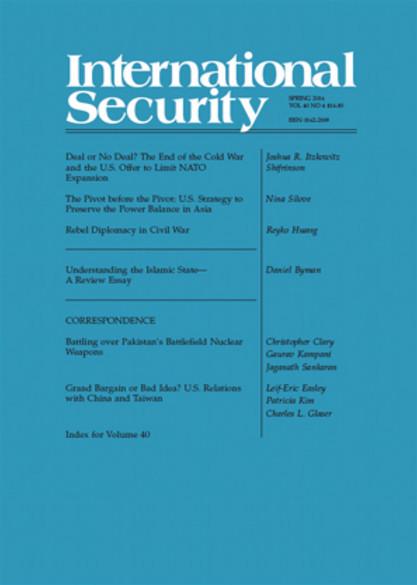India's Counterforce Temptations: Strategic Dilemmas, Doctrine, and Capabilities
IF 6.1
1区 社会学
Q1 INTERNATIONAL RELATIONS
引用次数: 42
Abstract
Abstract Is India shifting to a nuclear counterforce strategy? Continued aggression by Pakistan against India, enabled by Islamabad's nuclear strategy and India's inability to counter it, has prompted the leadership in Delhi to explore more flexible preemptive counterforce options in an attempt to reestablish deterrence. Increasingly, Indian officials are advancing the logic of counterforce targeting, and they have begun to lay out exceptions to India's long-standing no-first-use policy to potentially allow for the preemptive use of nuclear weapons. Simultaneously, India has been acquiring the components that its military would need to launch counterforce strikes. These include a growing number of accurate and responsive nuclear delivery systems, an array of surveillance platforms, and sophisticated missile defenses. Executing a counterforce strike against Pakistan, however, would be exceptionally difficult. Moreover, Pakistan's response to the mere fear that India might be pursuing a counterforce option could generate a dangerous regional arms race and crisis instability. A cycle of escalation would have significant implications not only for South Asia, but also for the broader nuclear landscape if other regional powers were similarly seduced by the temptations of nuclear counterforce.印度的反力量诱惑:战略困境、理论和能力
印度是否正在转向核反作用力战略?巴基斯坦对印度的持续侵略,在伊斯兰堡的核战略和印度无力反击的推动下,促使德里的领导层探索更灵活的先发制人的反击选择,试图重建威慑。印度官员正在越来越多地推进反武力目标的逻辑,他们已经开始列出印度长期以来不首先使用核武器政策的例外情况,可能允许先发制人地使用核武器。与此同时,印度一直在采购其军队发动反击所需的部件。这些包括越来越多的精确和反应灵敏的核运载系统,一系列监视平台和复杂的导弹防御系统。然而,对巴基斯坦实施反制打击将异常困难。此外,巴基斯坦对印度可能采取反制措施的担忧可能会引发危险的地区军备竞赛和危机不稳定。如果其他地区大国同样受到核对抗力量的诱惑,这种升级周期不仅会对南亚产生重大影响,而且会对更广泛的核格局产生重大影响。
本文章由计算机程序翻译,如有差异,请以英文原文为准。
求助全文
约1分钟内获得全文
求助全文
来源期刊

International Security
Social Sciences-Law
CiteScore
7.40
自引率
10.00%
发文量
13
期刊介绍:
International Security publishes lucid, well-documented essays on the full range of contemporary security issues. Its articles address traditional topics of war and peace, as well as more recent dimensions of security, including environmental, demographic, and humanitarian issues, transnational networks, and emerging technologies.
International Security has defined the debate on US national security policy and set the agenda for scholarship on international security affairs for more than forty years. The journal values scholarship that challenges the conventional wisdom, examines policy, engages theory, illuminates history, and discovers new trends.
Readers of IS discover new developments in:
The causes and prevention of war
U.S.-China relations
Great power politics
Ethnic conflict and intra-state war
Terrorism and insurgency
Regional security in Africa, Asia, Europe, and Latin America
U.S. foreign and defense policy
International relations theory
Diplomatic and military history
Cybersecurity and defense technology
Political economy, business, and security
Nuclear proliferation.
 求助内容:
求助内容: 应助结果提醒方式:
应助结果提醒方式:


